Learning how to sprouting beans is an easy and satisfying skill to learn. People have been preparing beans this way for thousands of years, and in just a few simple steps, you can learn how to sprout beans right in your kitchen!
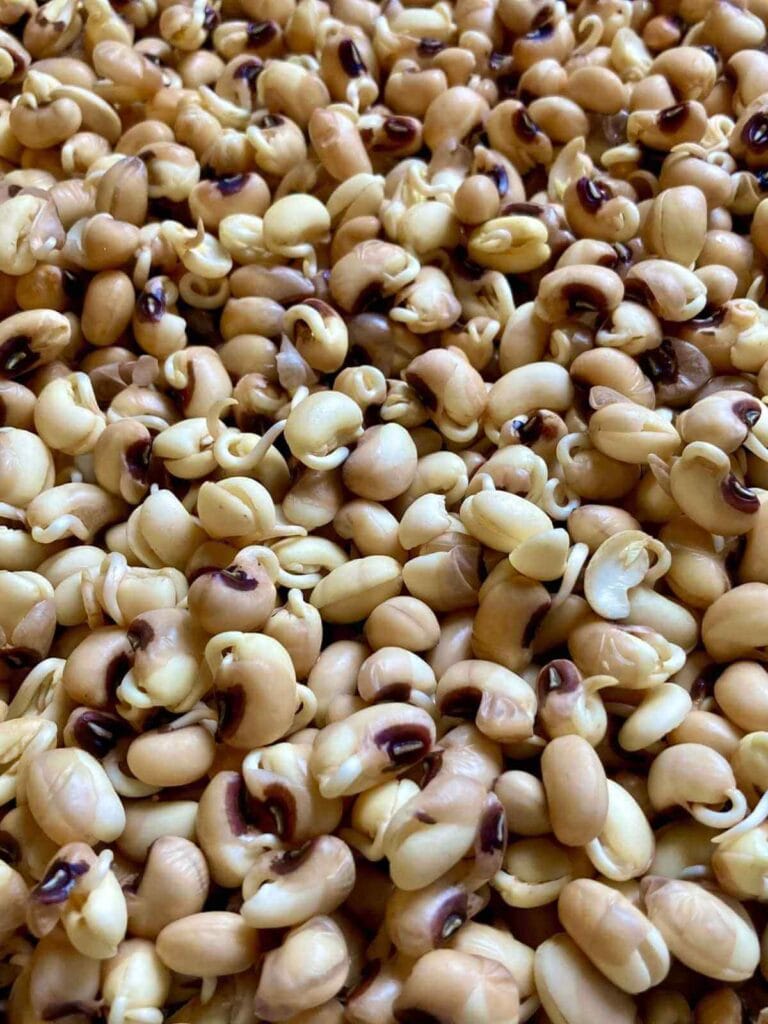
I’m always looking for easy ways to help my family eat healthier on a budget. So when I learned about sprouting beans, I had to try it!
We loved the results so much that sprouting beans is now part of my regular routine, and we eat more beans than ever. We don’t experience any of the negative effects typically associated with beans which is saying a lot for my husband who was unable to eat beans for years due to gut issues.
What’s Wrong with Unsprouted Beans?
Left unsprouted, beans are full of anti-nutrients which reduce the body’s ability to absorb nutrients in food (source). So when you’re eating that bowl of chili or lentil soup made with unsprouted beans, your body isn’t able to absorb a significant portion of the nutrients in the entire dish.
Lectins, one of the primary anti-nutrients in beans, can also cause effects such as bloating, gas, and nausea. Over time, they can even lead to auto-immune responses and chronic inflammatory conditions (source).
The good news is that sprouting beans removes or deactivates a high percentage of each of anti-nutrients!
More Reasons to Sprout Beans
If the reduction of anti-nutrients wasn’t enough, there are even more reasons why it’s best to sprout beans.
Contain more protein – Protein is an essential aspect of a healthy diet, and by eating sprouted beans instead of unsprouted, you’ll be automatically increasing your intake (source).
Higher vitamin and mineral content – While all beans have significant amounts of important vitamins and minerals, sprouted beans have been shown to have even higher concentrations (source).
Improved digestibility – The sprouting process releases enzymes which help your body to more easily absorb nutrition (source).
How to Cook
Sprouted beans can be cooked like unsprouted beans, just keep in mind that they won’t take quite as long. It’s not recommended to eat any sprouted beans, especially kidney beans, raw, so make sure that you fully cook them.
You can use them in any recipes that call for beans including tacos, soup, chili, and bean salad. You can even make your own refried beans which taste much better than the canned version!
The options are endless!
What Type of Beans to Use
You can sprout any variety of dry beans. For best results, always use organic beans.
While non-organic beans may sprout just fine some of the time, they may be sprayed with a chemical that prevents them from sprouting at all.
How to Store
Store sprouted beans in an airtight container in the fridge for up to three days before cooking them. If you can’t use them all up in time, you can freeze them for 8-10 months.
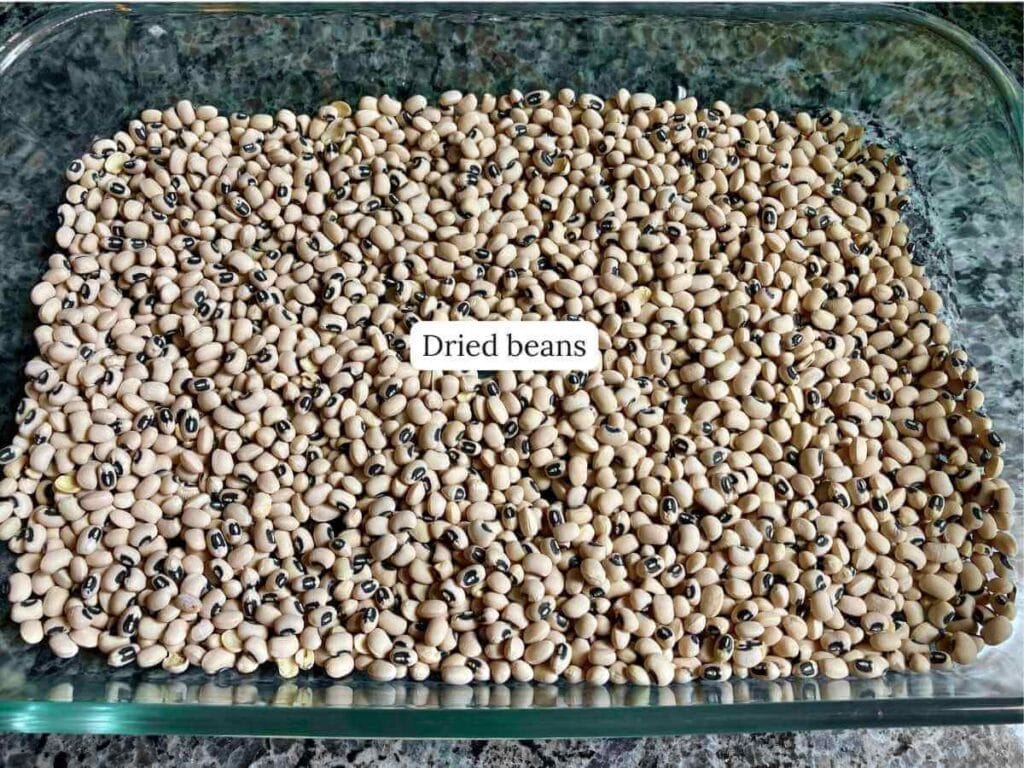
Ingredients & Tools
You don’t need any fancy equipment or ingredients to sprout beans! People have been doing this for thousands of years with only the simplest of tools.
Dry beans – I like to sprout a large amount of beans at once, however, you can also sprout beans in small batches.
Shallow baking dish – You can use a pie pan, glass baking dish, or something similar. My favorite pan to use is a 9″ x 13″ glass baking dish.
Water – Since the beans will soak up a lot of water, make sure to use quality drinking water such as filtered water, spring water, or clean well water.
This post contains affiliate links which means I earn a small commission at no extra cost to you. See my full disclosure here.
How to Sprout Beans
Day 1
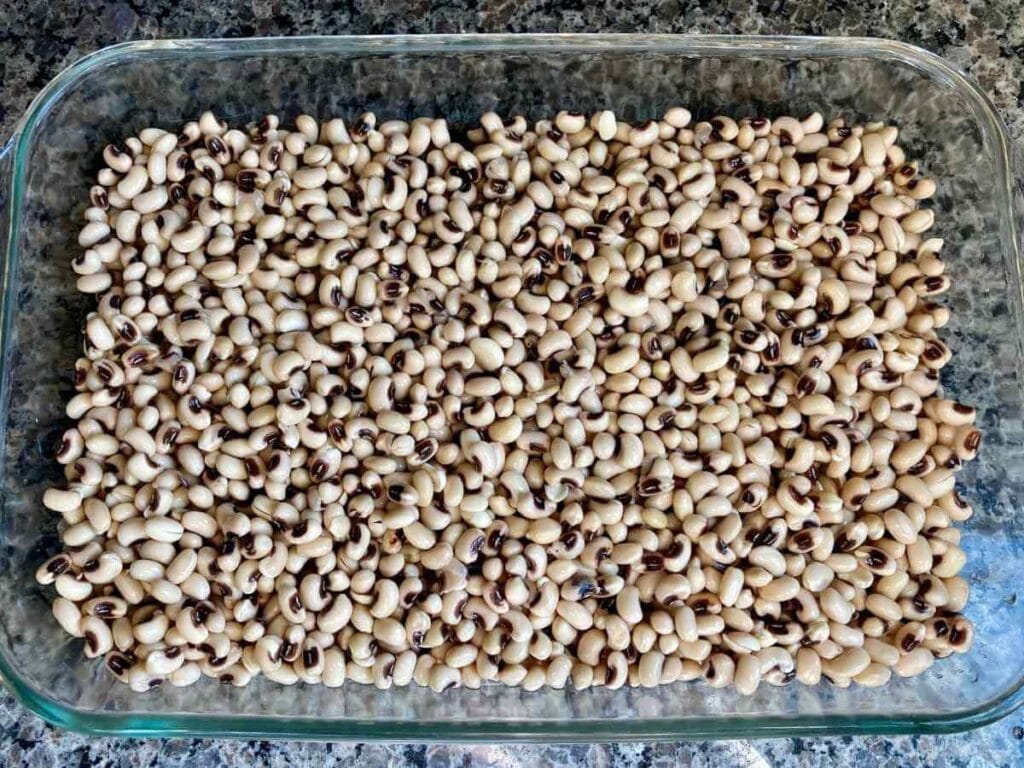
Step 1: First pour the dry beans into the baking dish. Make sure to not fill it up more than 1/5th full. The beans will expand a lot during the sprouting process.
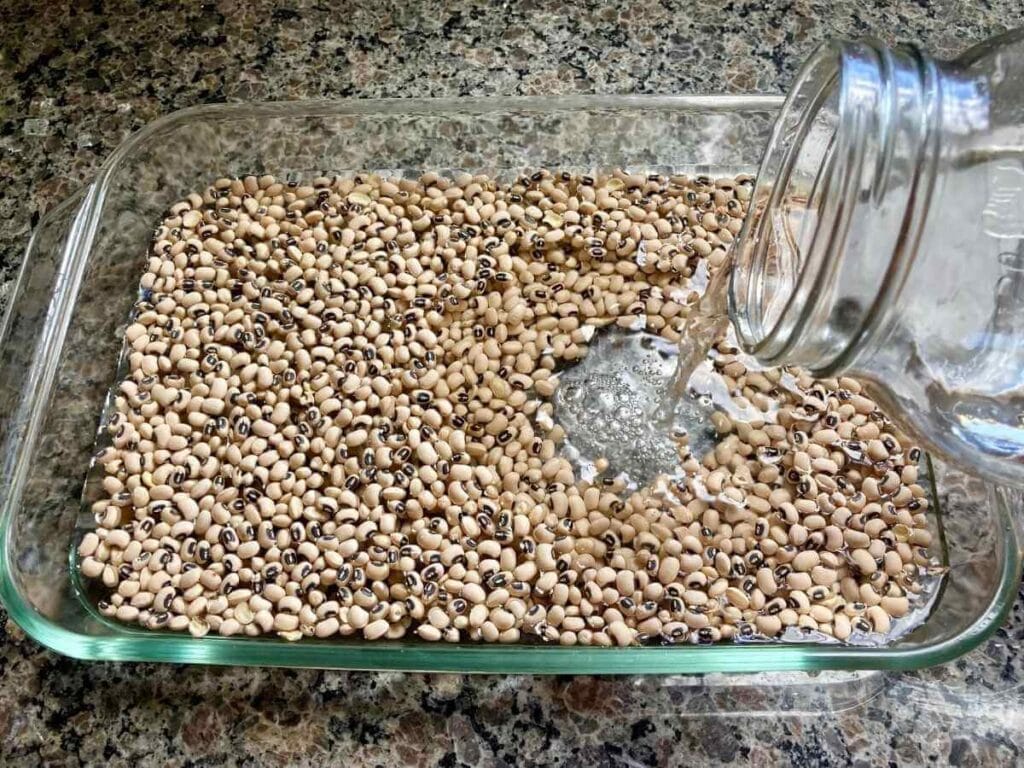
Step 2: Pour enough water into the dish to cover the beans at least 3 times. You can’t use too much water, but there’s no need to fill up the pan completely to the top.
Some of the beans will likely be floating, so tap them with a spoon to make them sink.
Cover the pan with a towel or something else that allows airflow and let sit at room temperature for overnight or for 12-18 hours.
Days 2-4
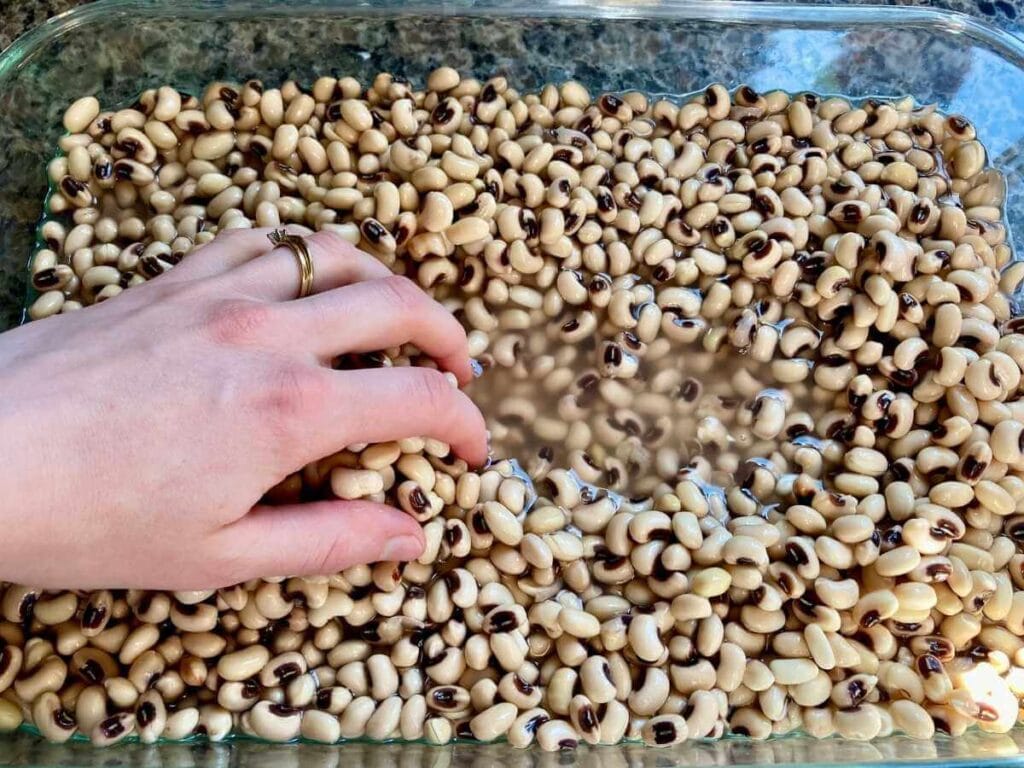
Step 1: On day 2, drain the water out of the pan. Then, add more water and swish the beans in it to rinse them. Now drain this water out of the pan.
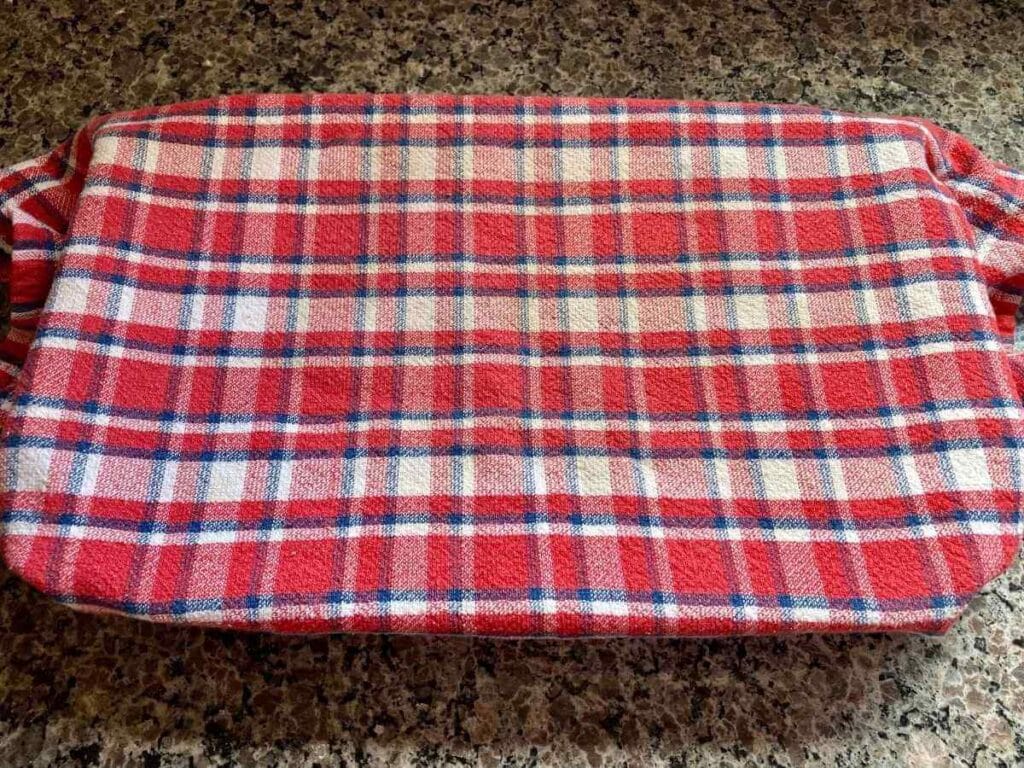
Step 2: Make sure the beans are spread evenly across the pan and cover.
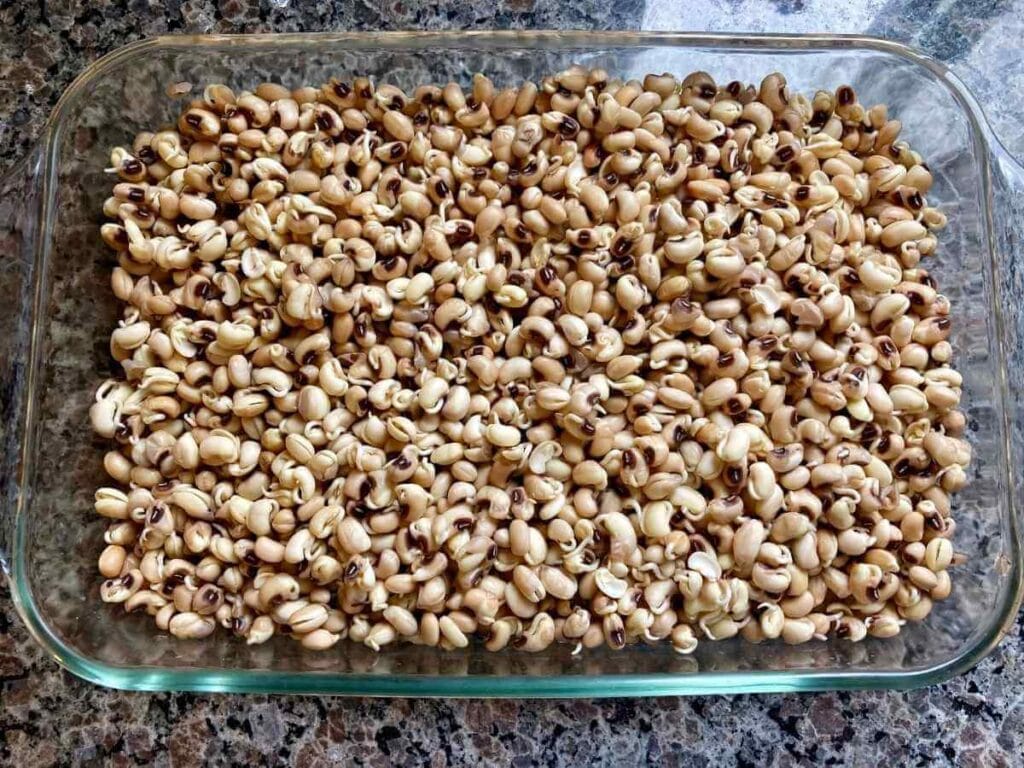
Step 3: Repeat step 1 3-4 times a day until the beans have grown approximately 1/4″ – 1/2″ sprouts.
This will take different amounts of time based on the type of bean you are using and the temperature of the room. Most beans will grow sprouts within 3-4 days.
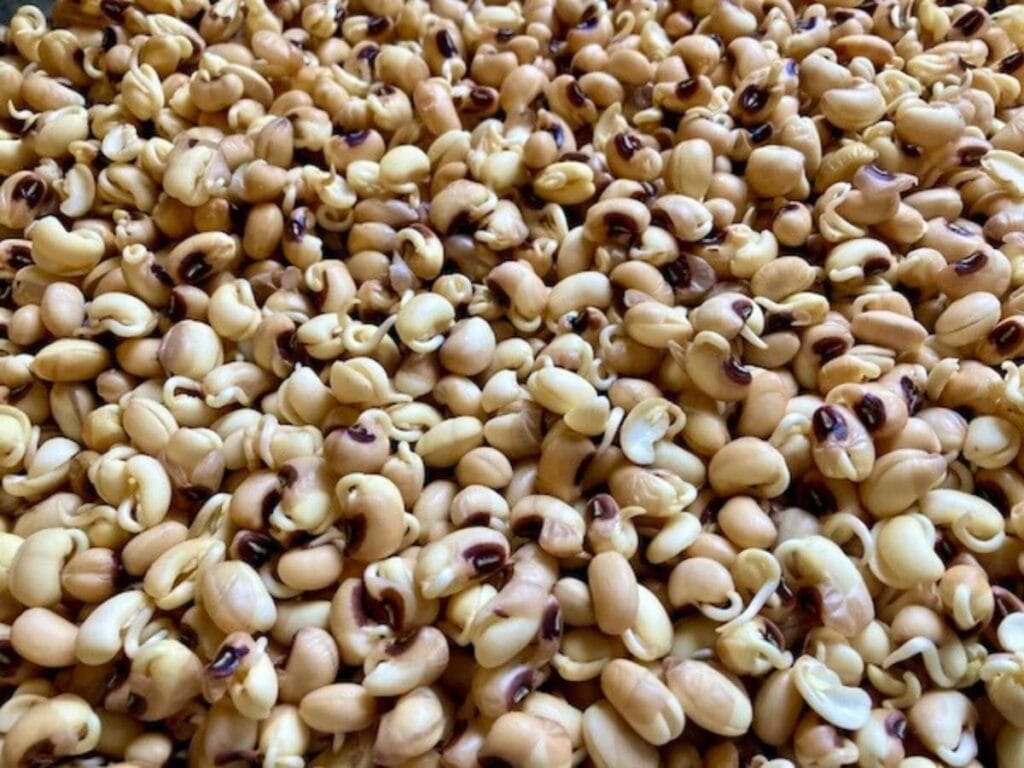
Step 4: Once the beans have grown 1/4″ – 1/2″ sprouts, you can store them in the fridge for up to 3 days to cook later or go ahead and cook them right away.
If you try sprouting beans, let me know in the comments! Tag me on Instagram @violet_rightathome
More Traditional Food Recipes
Complete Guide to Easy Homemade Yogurt without a Yogurt Maker
How to Make Water Kefir from Start to Finish
Beet Kvass Recipe – Traditional Fermented Drink
Fermented Cranberries in Honey
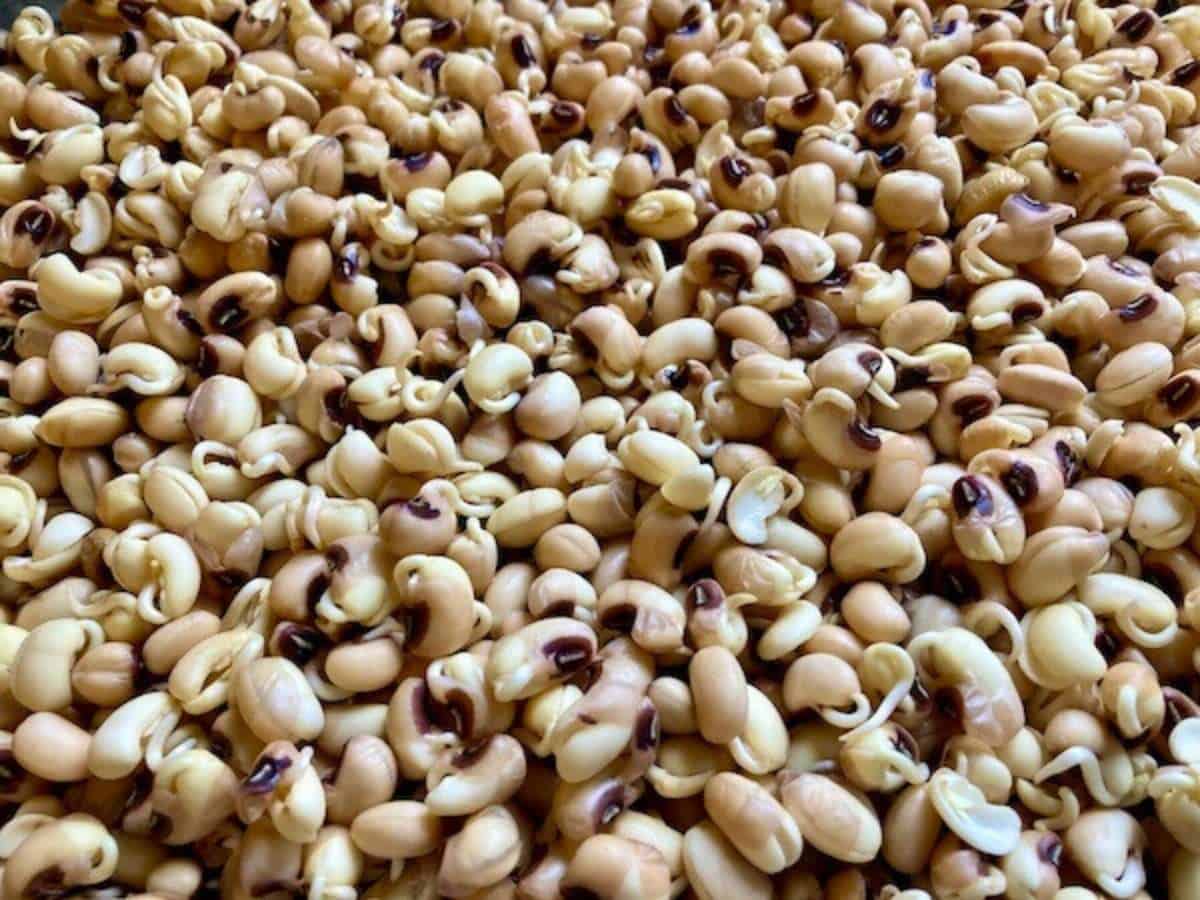
How to Sprout Beans
Ingredients
- Organic dry beans
- Water
Instructions
- Pour the beans into a baking dish. Make sure to not fill it more than 1/5th full.
- Pour enough water into the dish to cover the beans at least 3 times.
- Some of the beans will likely be floating, so tap them with a spoon to make them sink.
- Cover the pan with a towel and let sit overnight or for 12-18 hours.
- Drain the water out of the pan.
- Add more water and swish the beans in it to rinse them.
- Now drain this water out of the pan.
- Spread the beans evenly across the pan and cover.
- Repeat steps 6-8 three to four times a day until the beans have grown approximately 1/4" – 1/2" sprouts.
Notes
Nutrition
If you love sprouted beans, please make sure to come back and leave a comment and a 5 star rating. I’d love to hear how it turned out for you!
Also, I’d love to have you part of the Right At Home community! Make sure to join my newsletter for all the latest recipes, DIYs, and motherhood encouragement.


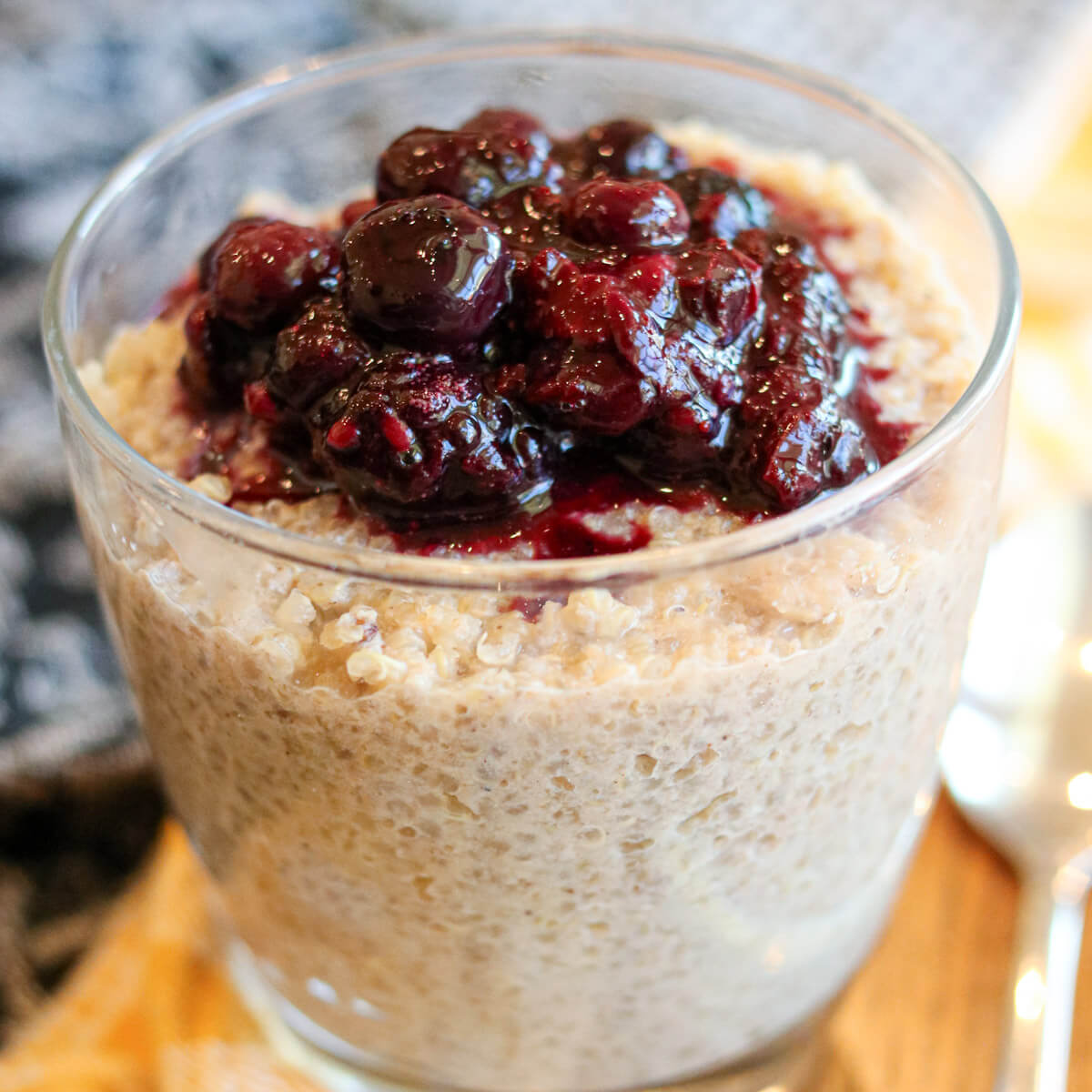
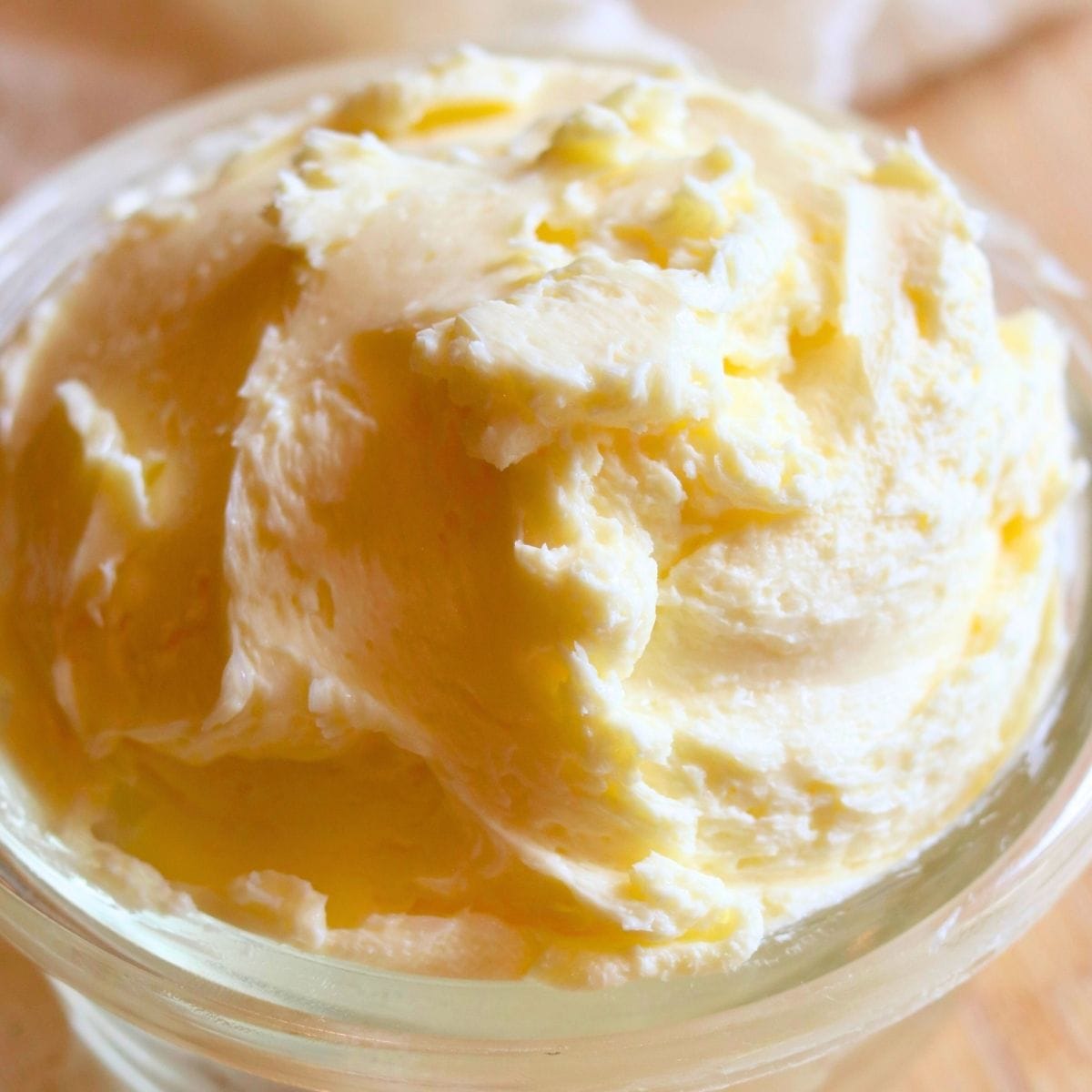
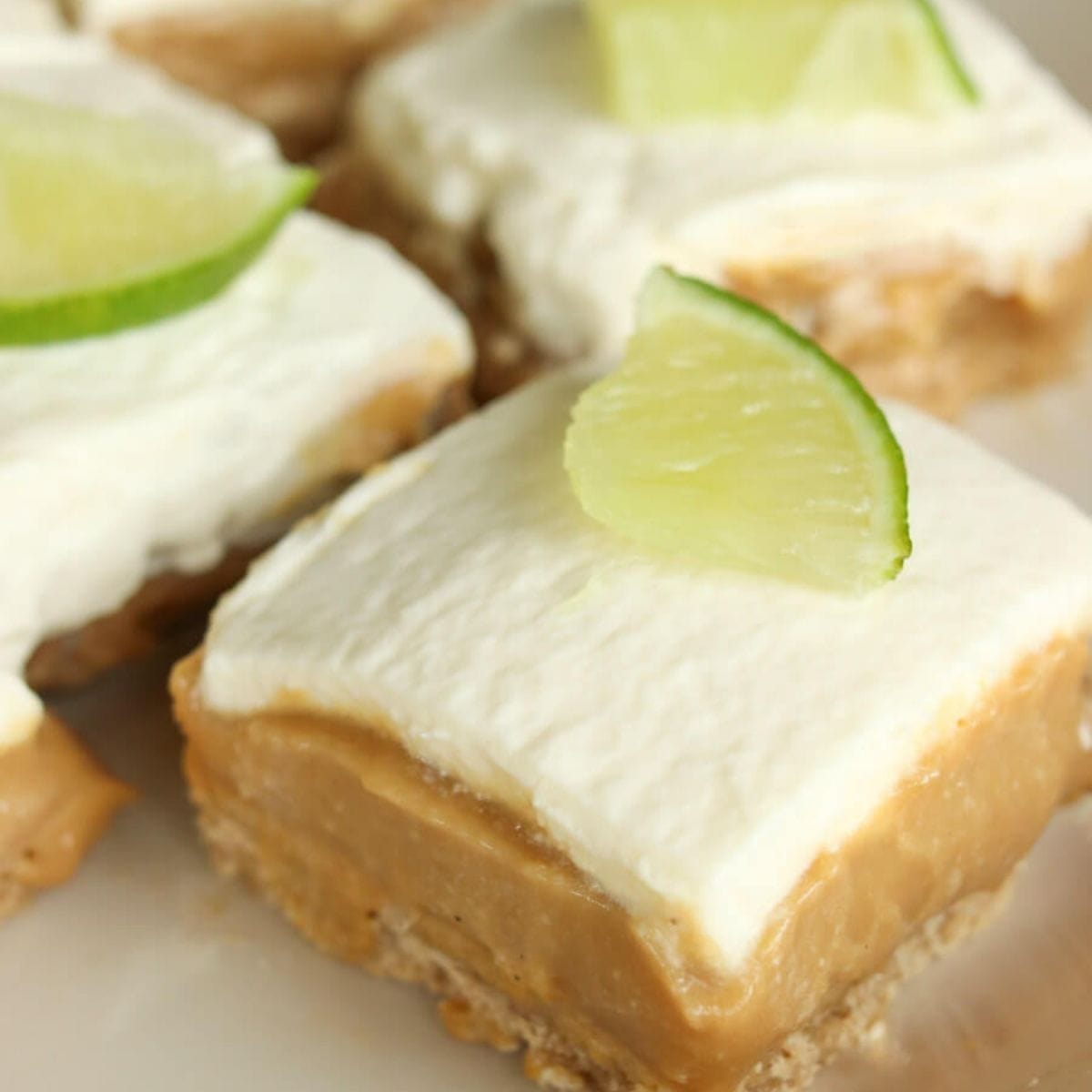

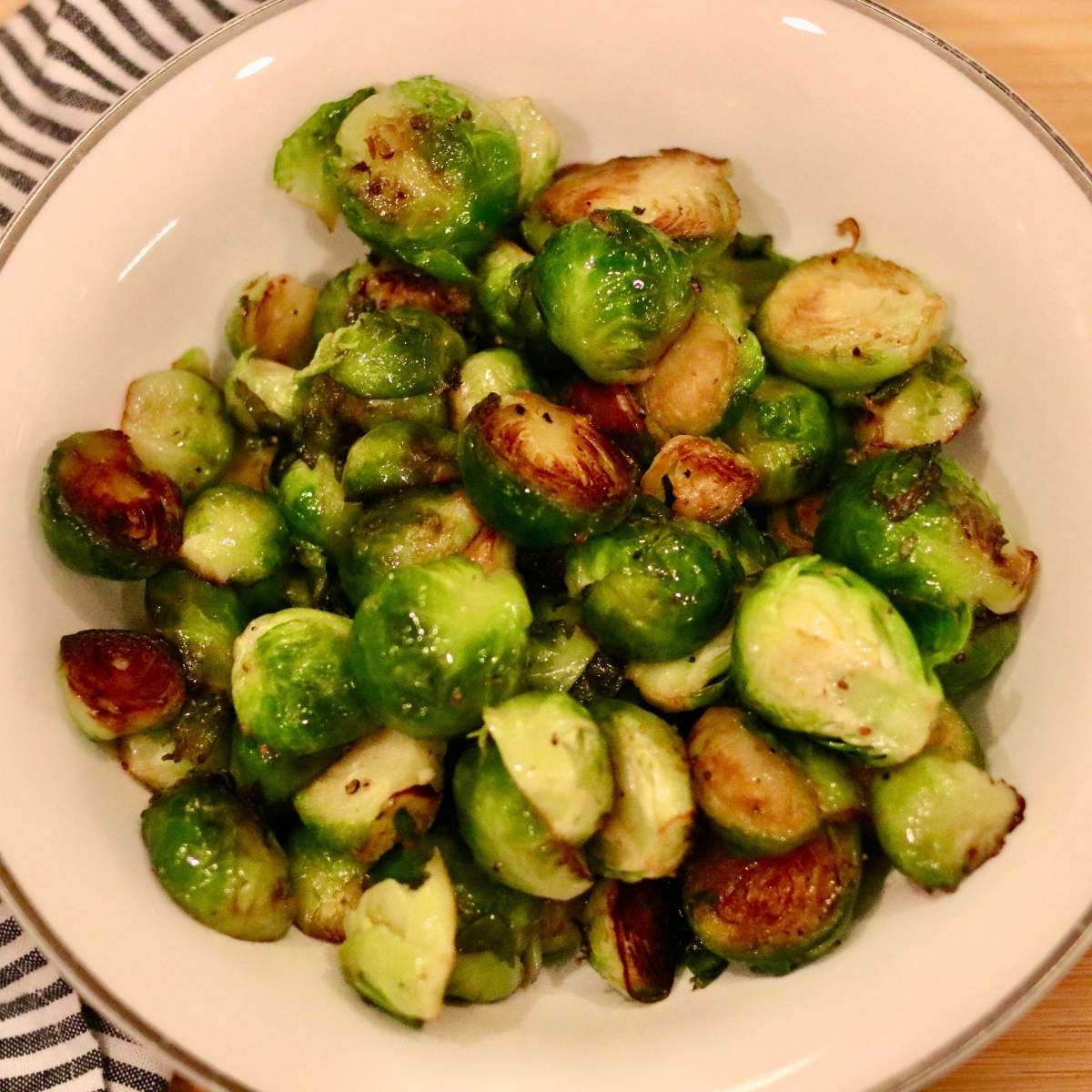

After sprouting beans, I’ll never prepare them any other way! If you have any questions on sprouting them, let me know in the comments and I’ll get back to you!